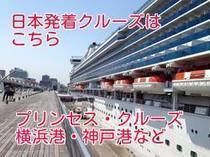Rapid changes in air and land transportation in the postwar era rapidly brought population centers and stay-at-home resorts closer together. In addition to the traditional "summer summer getaways" of New England and Maine on the East Coast, people from Chicago, New York, and other cities expanded their choices of places to stay as "winter getaways," seeking beaches (and pools) during the day and casinos and shows at night, extending to Florida and other Southeast states as well as to the Caribbean. This has led to a broadening of the choice of places to stay as "winter getaway destinations.
In addition to the casinos in Kentucky and the North Miami area and Cuba, the new Las Vegas and other casinos and entertainment, including shows, became the focus of even greater attention than before.
Due in part to the unrest in Cuba, funds from pensions of transportation unions (Teamsters) and other pension funds, mainly from the Midwest, flowed into the emerging city of Las Vegas in the desert, helping the rapid growth of this emerging tourist destination and stimulating the hotel industry there by building new super-sized hotels and increasing the floor space.
Using their financial resources as a shield, the new hotels swept away the traditional idea of small-scale stay-and-go facilities and created a new business model as a large scale stay-and-go travel destination that was also loaded with casinos and shows.
In the 1960s, transparency in the casino business became an issue. Federal tax clampdowns and aggressive intervention by state authorities succeeded in cleaning up the traditional "negative legacy" (mafia-controlled anti-skimming measures). The entry into the casino industry of "entrepreneurs" such as Howard Hughes and Kirk Kerkorian, as well as various administrative measures taken by state government corporations against the casino industry, also encouraged the entry into Las Vegas by international hotel companies such as Hilton Hotels.
Many of them believed that the future of Las Vegas lay in its development as a comprehensive entertainment city with theaters and many restaurants, outgrowing the "casino industry. They aggressively marketed the former "casino industry" city as a new stay-and-go tourist city where families could enjoy themselves and events could be held.
In the late 1960s, they attracted star entertainers from Los Angeles and Hollywood, and the foundation was laid for Las Vegas to become a new theme park-type stay-and-go city with casinos and nightlife. By this time, Las Vegas had become the healthiest and safest city in the world.
This improved environment prompted the state of Nevada and the tourism authorities to expand the convention center's facilities, while private capital was used to build it. Hotels and other accommodations and healthy nighttime entertainment worked to attract events and travelers from all over the U.S., and repeat visitor measures were strengthened to ensure further stable growth.
Like Las Vegas in the west, Orlando in the east (Florida) has grown rapidly as a new staycation resort city (such as the "family staycation" Disney World). This new resort city was expanding along with the entertainment industry, an expansion project along the lines of Disney's grand project based on careful and long-term vision.
Planned since around 1963, and using pseudonyms and other secretive land acquisitions, the city was born in 1971 as a theme park-type city complete with a huge family-style amusement park and a hotel for stays, such as "Disney World". (Adjacent Epcot Center: opened in 1982).
The management philosophy is to "pass on the joy of experiencing Disneyland and other theme parks to the next generation and grandchildren. These cities will further expand their scope to include large-scale accommodations for general entertainment (amusement type), and they will become more and more "theme park cities".
【このカテゴリーの最新記事】
- no image
- no image
- no image
- no image
- no image
- no image




















